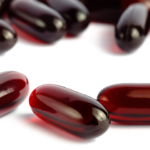Weight Loss Injections: A Revolutionary Approach to Weight Management
The pursuit of effective and sustainable weight management remains a significant global health concern. Traditional methods, often involving dietary restrictions and strenuous exercise, can prove challenging for many individuals to maintain long-term. This has fueled the exploration of innovative approaches, with weight loss injections emerging as a potentially revolutionary tool in the fight against obesity and related health issues. These injections aren’t a magic bullet, but they offer a distinct mechanism to aid weight loss by targeting specific physiological processes influencing appetite and metabolism.
Understanding the Mechanisms of Action:
Several different types of weight loss injections are currently available or under development, each working through unique biological pathways. Many focus on manipulating hormones that regulate hunger and satiety. For instance, some injections contain GLP-1 receptor agonists. GLP-1 (glucagon-like peptide-1) is a naturally occurring hormone released in the gut after eating. It slows gastric emptying, increasing feelings of fullness and reducing food intake. GLP-1 agonists mimic this effect, promoting weight loss by reducing appetite and caloric consumption. These agonists also influence insulin secretion, potentially improving glucose control in individuals with type 2 diabetes.
Another class of weight loss injections involves amylin analogs. Amylin is a pancreatic hormone that suppresses appetite and slows gastric emptying. Amylin analogs work similarly to GLP-1 agonists, but they might offer additional benefits in managing blood sugar levels and reducing post-meal glucose spikes.
Beyond appetite regulation, some weight loss injections might also influence energy expenditure. Certain compounds under research may affect metabolic rate, increasing the number of calories burned at rest. However, the evidence supporting this mechanism is still evolving.
Types of Weight Loss Injections:
Several commercially available weight loss injections have gained popularity, each with its own profile of benefits, side effects, and eligibility criteria. It’s crucial to consult with a healthcare professional to determine the suitability of any specific injection. Self-medication is strongly discouraged. The choice of injection depends on various factors, including individual health status, weight loss goals, and potential side effects.
Semaglutide: This GLP-1 receptor agonist is approved for weight management in adults with obesity or overweight with at least one weight-related condition like hypertension or type 2 diabetes. It’s administered weekly via subcutaneous injection.
Liraglutide: Another GLP-1 receptor agonist, liraglutide is also prescribed for weight loss in conjunction with lifestyle modifications. It’s administered daily via subcutaneous injection.
Tirzepatide: This is a newer injectable medication that targets both GLP-1 and GIP (glucose-dependent insulinotropic polypeptide) receptors. By acting on both receptors, tirzepatide might offer more pronounced weight loss effects compared to GLP-1 agonists alone.
Safety and Side Effects:
While generally well-tolerated, weight loss injections can cause side effects, varying in severity and frequency depending on the specific medication and individual patient response. Common side effects include nausea, vomiting, diarrhea, constipation, and abdominal pain. These are often mild and transient, but they can be bothersome for some individuals. More serious side effects, though less frequent, might include pancreatitis, gallbladder problems, and kidney issues. Regular monitoring and open communication with a healthcare provider are essential to manage potential side effects and address any concerns promptly.
Eligibility and Patient Selection:
Weight loss injections are not suitable for everyone. Healthcare professionals carefully assess individual patients to determine their eligibility. Factors considered include Body Mass Index (BMI), the presence of co-morbidities like diabetes or hypertension, and the absence of contraindications, such as a history of pancreatitis or certain types of tumors. A comprehensive medical history, physical examination, and potentially blood tests are required before prescribing weight loss injections.
Integration with Lifestyle Modifications:
It’s crucial to understand that weight loss injections are not standalone solutions. They are most effective when combined with a comprehensive weight management plan involving lifestyle modifications. This typically includes dietary changes focused on nutrient-dense foods, regular physical activity, and behavioral interventions to address eating habits and emotional triggers related to food. A holistic approach maximizing the benefits of the injection and promoting sustainable weight loss is crucial. Weight loss injections should be viewed as a tool to support and enhance, not replace, lifestyle changes.
Long-Term Sustainability and Maintenance:
Maintaining weight loss achieved with injections requires ongoing commitment to lifestyle modifications. The decision to continue or discontinue treatment is made in collaboration with the healthcare provider based on individual progress, goals, and potential risks. Weight regain is possible after stopping the injections if lifestyle modifications are not maintained. Therefore, focusing on sustainable lifestyle changes is essential for long-term success in managing weight.
Cost and Accessibility:
The cost of weight loss injections can be a barrier for many individuals. The price varies depending on the specific medication, dosage, and insurance coverage. Accessibility might also be limited due to factors such as insurance limitations and geographic location. Discussions with healthcare providers and insurance companies are crucial to assess individual financial implications and explore options for managing costs.
Emerging Research and Future Directions:
Research into weight loss injections is ongoing, exploring new compounds, refining existing therapies, and investigating the optimal combination of injections and other interventions. Future studies might focus on personalized medicine approaches, tailoring treatment to individual genetic and metabolic profiles for more effective and individualized weight management strategies. The development of more cost-effective and accessible injections is also a key area of focus in the field.





